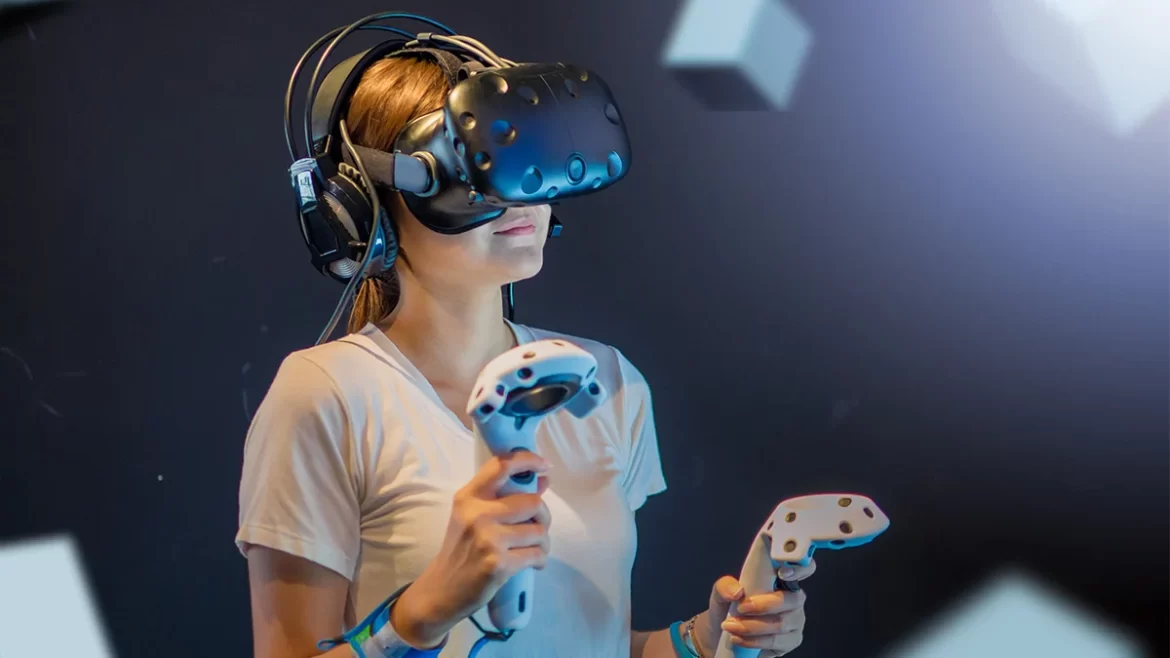Virtual Reality (VR) is a computer-generated simulation of a three-dimensional environment that can be interacted with in a seemingly real or physical way. Using specialized hardware, such as headsets, gloves, or controllers, VR immerses users in a digital world, allowing them to interact with the environment and objects as though they were physically present.
What is the Best VR Headset for PC Gaming?
Virtual Reality (VR) technology has revolutionized gaming, offering immersive experiences that transport players to another world. In this article, we explore the top VR headsets for PC gaming, highlighting their features, performance, and pricing to help you choose the best option for your needs.
1. Meta Quest 3
Price: $500
The Meta Quest 3 takes the crown for its balance of performance, affordability, and innovation. This headset boasts a 4K+ Infinity Display with a resolution of 2,064 x 2,208 pixels per eye. Its 120Hz refresh rate (in experimental mode) ensures smooth visuals, while the 110° field of view delivers a broad, immersive perspective. Meta has significantly improved this iteration, making it a top choice for gamers seeking a premium experience without a hefty price tag.
2. Apple Vision Pro
Apple’s Vision Pro introduces a new era in VR with its Vision OS spatial operating system and micro-OLED displays featuring 23 million pixels. Designed for seamless integration between physical and virtual realities, it promises an unmatched experience. Features like spatial FaceTime and a personal cinema elevate it beyond gaming, catering to tech enthusiasts seeking multifunctionality.
3. Meta Quest 2
Price: $300
An industry trailblazer, the Meta Quest 2 delivers impressive specs, including a resolution of 1,832 x 1,920 pixels per eye, a 120Hz refresh rate, and a 100° field of view. While slightly narrower in vision compared to newer models, its budget-friendly price and robust library of games make it a solid choice for gamers and VR beginners. A downside is the requirement to link it with a Facebook account.
4. Valve Index
Price: $1,100
Known for its superior tracking and ergonomic design, the Valve Index features a resolution of 1,440 x 1,600 pixels per eye, a 120Hz refresh rate (upgradable to 144Hz in experimental mode), and a 130° field of view. Its compatibility with Steam VR and advanced controllers makes it a favorite among hardcore gamers. However, the high price and extensive setup requirements might deter casual users.
5. HTC Vive Pro 2
Price: $800
The HTC Vive Pro 2 is ideal for gamers prioritizing image quality. It features an ultra-high resolution of 2,448 x 2,448 pixels per eye and a 120Hz refresh rate, providing 5K visuals. With a 120° field of view, it offers an unparalleled immersive experience. However, its premium price and the need for a powerful PC make it best suited for enthusiasts ready to invest in high-end VR.
6. HP Reverb G2
Price: $470
For those seeking a balance between quality and affordability, the HP Reverb G2 is a great pick. With a resolution of 2,160 x 2,160 pixels per eye, a 90Hz refresh rate, and a 114° field of view, it delivers a 4K experience at a reasonable price. While it requires a robust PC, its compatibility with Steam VR offers access to a vast gaming library.
7. PlayStation VR2
Price: $550
Exclusive to the PlayStation 5, the PlayStation VR2 offers a resolution of 2,000 x 2,400 pixels per eye, a 120Hz refresh rate, and a 110° field of view. Its seamless integration with the PS5 ensures smooth gameplay and breathtaking visuals. Although its console exclusivity limits its utility, it provides a stellar VR experience for PlayStation fans.
Choosing the Best VR Headset for You
When selecting a VR headset for PC gaming, consider the following:
- Budget: High-end options like the HTC Vive Pro 2 and Valve Index offer exceptional visuals but come at a premium price.
- Performance: Gamers with powerful PCs can maximize headsets like the HP Reverb G2 or Valve Index.
- Compatibility: Ensure the headset is compatible with your gaming platform and library.
- Features: Look for features like high resolution, refresh rates, and field of view to enhance immersion.
Key Features of VR
- Immersive Experience:
VR creates a sense of “presence,” making users feel as if they are inside the virtual environment. This is achieved through realistic visuals, spatial audio, and interactive elements. - Interactivity:
Users can manipulate and interact with virtual objects, making the experience dynamic and engaging. For example, in gaming, you can pick up items, fight enemies, or solve puzzles within the virtual space. - 3D Environments:
The environments in VR are fully three-dimensional, replicating real-world depth and space, often enhanced with lifelike details.
How VR Works
- Hardware Components:
- VR Headsets: Display visuals and track head movement to adjust the view in real-time. Examples include the Meta Quest series, Valve Index, and PlayStation VR2.
- Motion Controllers: Allow users to interact with objects in the VR world by mimicking real-world hand movements.
- Sensors and Cameras: Track the user’s position and movements to enhance the experience.
- Software Components:
- Games, simulations, or apps generate the virtual environment. These programs process input from the hardware and provide feedback to users.
Applications of VR
- Gaming: Creating immersive worlds for players to explore and engage with.
- Education and Training: Simulating real-life scenarios, such as medical procedures or pilot training, for hands-on learning.
- Healthcare: Assisting in therapy, rehabilitation, and even pain management through distraction techniques.
- Real Estate and Design: Offering virtual tours of properties or visualizing architectural projects before construction.
Why is VR Important?
VR bridges the gap between imagination and experience, making it possible to explore environments, practice skills, and engage with content in unprecedented ways. Its potential continues to expand

